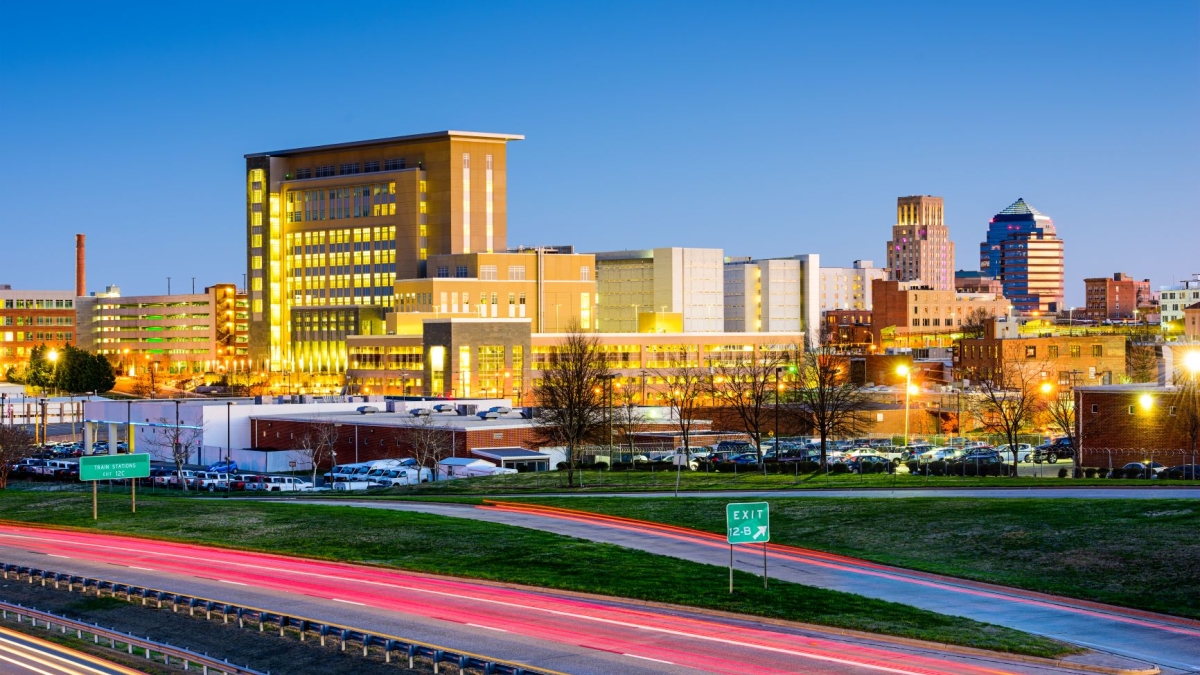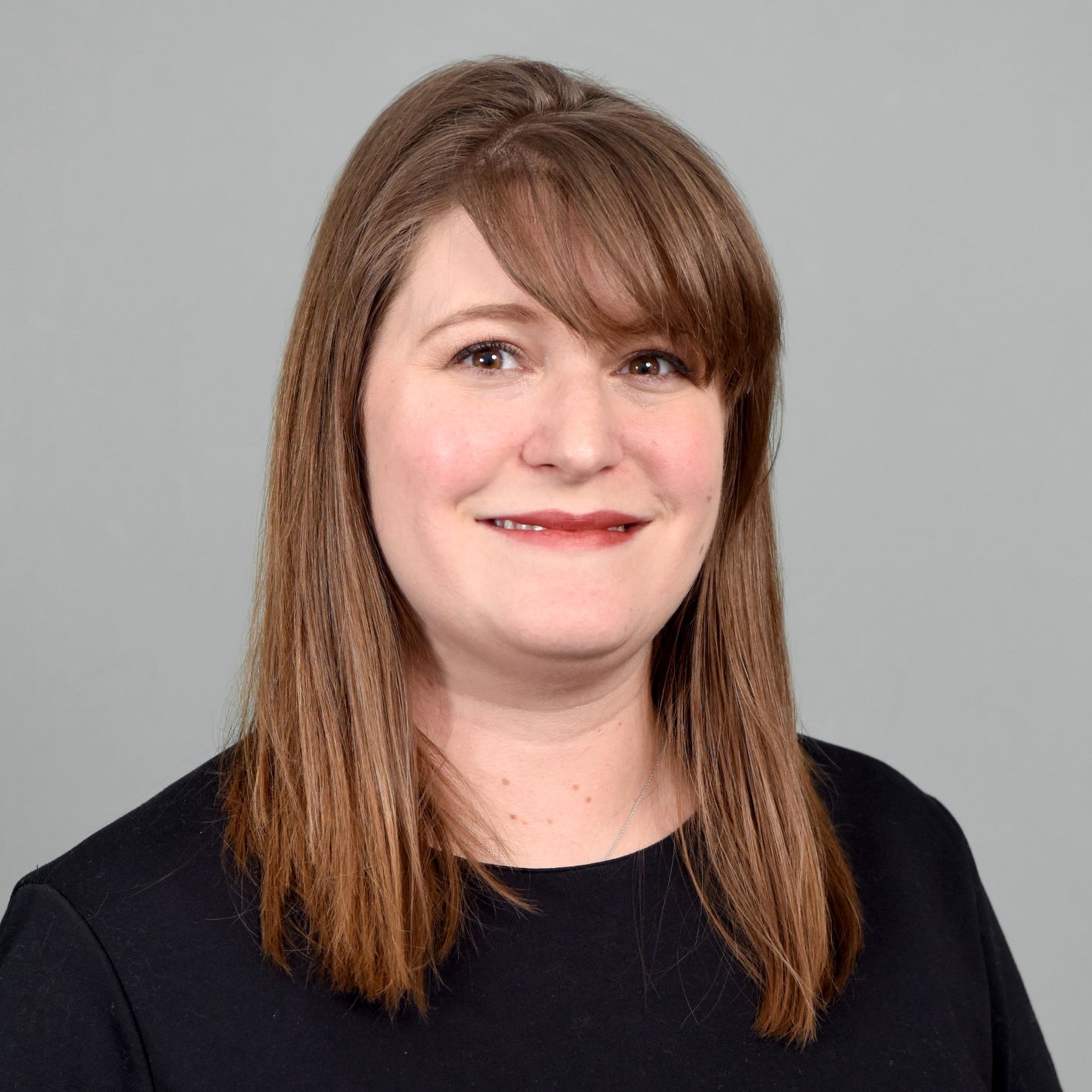ASU research examines how university-community engagement can improve neighborhoods

The Durham, North Carolina, skyline. Photo courtesy of Depositphotos
Enduring organizations, like universities or hospitals, that are rooted in a specific location play vital roles in their neighboring communities and economies.
Researchers have long understood that the health of an "anchor institution" is intimately tied to the health of their immediate surrounding neighborhoods, but exactly how anchor institutions choose to engage with and invest in their communities varies, and although good-intentioned, these actions can have negative consequences.
Meagan Ehlenz, assistant professor in Arizona State University's School of Geographical Sciences and Urban Planning, recently published research that explores new insights into how universities can engage their communities to ensure strong relationships and investments with mutually beneficial outcomes.
In her paper titled, “‘Can You Imagine What’s Happened in Durham?’ Duke University and a New University-Community Engagement Model,” published in the Journal of the American Planning Association, Ehlenz conducts an extended case study investigating Duke University’s unique anchor-institution strategy and the impact it has had on the surrounding community of Durham, North Carolina.
“Universities have long been incredible resources within cities; however, they’re not just educators and research innovators,” Ehlenz said. “Universities are also substantial neighbors with large physical footprints and campus populations.”
“The Duke-Durham case study illustrates how a university can really embrace its anchor role and pursue mutually beneficial strategies for both town and gown.”
Not ‘What I can do for you’ — rather, ‘How can I help?’
In the early 1990s, Duke did not have a favorable reputation with its surrounding neighborhoods. While Duke’s elite academic reputation was rising, it was mismatched by the economic decline of Durham, North Carolina, a city reliant on a collapsed tobacco and textile industry.
The inequality between the university and its surrounding neighborhoods was palpable, and perceived inaction and ill will from Duke, especially toward Durham’s Black population, led to some local community members to refer to Duke as "The Plantation" — a place where you work, you provide labor, but you don’t participate in other aspects of the university.
“It was pretty contentious and their legacy was not great,” Ehlenz said. “(Duke) knew that they couldn’t be the face of that, and knew that they couldn’t just go out and say, ‘Hey neighborhood, this is what we’re doing for you.’ They had to say ‘Hey neighborhood, what can we do for you? How can we be a tool for you?’”
In designing and implementing their neighborhood revitalization strategy, Duke uniquely chose from the beginning to put community voices at its center, rooting its efforts in conversation and partnership.
Duke initiated a series of neighborhood meetings and hired two former elected officials with deep roots in the surrounding communities to moderate and align university missions with local priorities.
As a result, informed by the needs and wants of the communities themselves, Duke chose to target 12 of its surrounding neighborhoods, each with its personalized community-centered priority that would guide Duke’s actions.

Meagan Ehlenz
“It was really smart … (Duke) decided that they weren’t just going to take one approach. They worked with these neighborhoods, and these neighborhoods established their own priorities, which were different,” Ehlenz said. “Some neighborhoods said they needed a health center or a community center; others said they needed stable housing or that they were concerned about the behavior of the college kids ... they had multiple approaches.”
In executing their anchor-institution strategies, Duke chose to create partnerships and invest in existing community organizations instead of leading all the work.
One of Duke’s priorities was the development of permanently affordable housing, and instead of building it itself, it gave the capital to community organizations to manage, including a community development finance institution, a nonprofit developer and a community land trust organization.
“Instead of branding everything a Duke initiative, they said, ‘We don’t need to get credit in the traditional way, we don’t need to market this in the traditional way, we will reap the benefits, we will build the partnerships, but we don’t have to be the ones in front,’” Ehlenz said. “Duke said, ‘We’ll put these other organizations who are out in the community, who are doing the work, in front, put the community itself in front and we’ll be the support piece in the back,’ which I think was really smart and unusual in a lot of respects.”
Duke’s community engagement process led to the formalization of a university-community partnership at Duke: The Duke-Durham Neighborhood Partnership. The partnership was and remains the central hub for Duke’s neighborhood-focused efforts and consistently reevaluates their revitalization work.
Today, relationships between Duke and its surrounding neighborhoods are deeper with clearer communication lines. Ehlenz’s research found that neighborhoods now view Duke as a partner that supports their pursuits, and they believe Duke’s investments have changed the town-gown culture in meaningful ways.
“Duke’s story relies on citizen-led participation, partnership and reflexive revitalization strategies that highlight the exemplary ways Duke administrators have elected to define their anchor roles,” Ehlenz said.
Mutually beneficial for us
In theory, all anchor-institution strategies are rooted in good intentions that may lead to positive neighborhood outcomes. But it’s not that simple.
Universities that choose to invest in their neighborhoods may spur new development from the built environment perspective, but for a truly mutually beneficial anchor-institution strategy Ehlenz cautions that you have to look at how it incorporates the people who live within the neighborhood.
“There is a lot of conversation about mutually beneficial investments in anchor-institution strategies, that if the university does this, it improves the neighborhood, which in turn improves our situation,” Ehlenz said. “What I’ve found in other studies is that that's not always quite so true. It can be better for the market, so home values improve and strengthen, but gentrification can happen, and that’s not the same as being mutually beneficial to the local neighborhood.”
Gentrification has been rapidly shifting housing markets in Durham and has impacted households across the community — especially in the last few years.
However, Duke’s strategy to prioritize permanently affordable housing over market-rate development has helped preserve housing opportunities for some of the neighborhood’s lowest-income residents amidst these changes. And, looking forward, Duke continues to convene and invest in much larger conversations about affordable housing production and preservation throughout Durham.
"Again, that’s where Duke is a little different,” Ehlenz said. “They made some choices that enabled them to better realize this idea that we’re going to be mutually beneficial for us, for Duke, and for our existing neighbors, not just the real estate market, not just for streetscaping.”
Ehlenz says that for other universities or anchor institutions interested in applying some of Duke’s strategies to their own situation, how they approach the community process at the strategy’s core is really important.
“If an anchor institution wants to have a mutually beneficial outcome, you have got to involve the community in real ways,” Ehlenz said. “It's painful, you have to go through that venting process where people are angry and just want to tell you how terrible you are — but if you get through that, there are some really meaningful ways for anchor institutions to understand what a neighborhood needs.”
“There are partners out there; you can work with to achieve it. It’s not all on you — you can build the partnership, and I think it’s been incredibly effective.”
More Environment and sustainability

ASU prof turns trash into treasure
The Research Corporation for Science Advancement, or RCSA, regularly hosts a series of discussions known as Scialog, a…

Best outdoor experiences are shared and build connections, recreation professor says
Steve Sassaman doesn’t really need to tell you he’s an outdoorsman. One look at his full, dark beard gives a vibe that clearly…

ASU offers new project-based courses for global leaders of tomorrow
Addressing complex challenges requires innovative solutions.This is why the College of Global Futures — with its four academic…